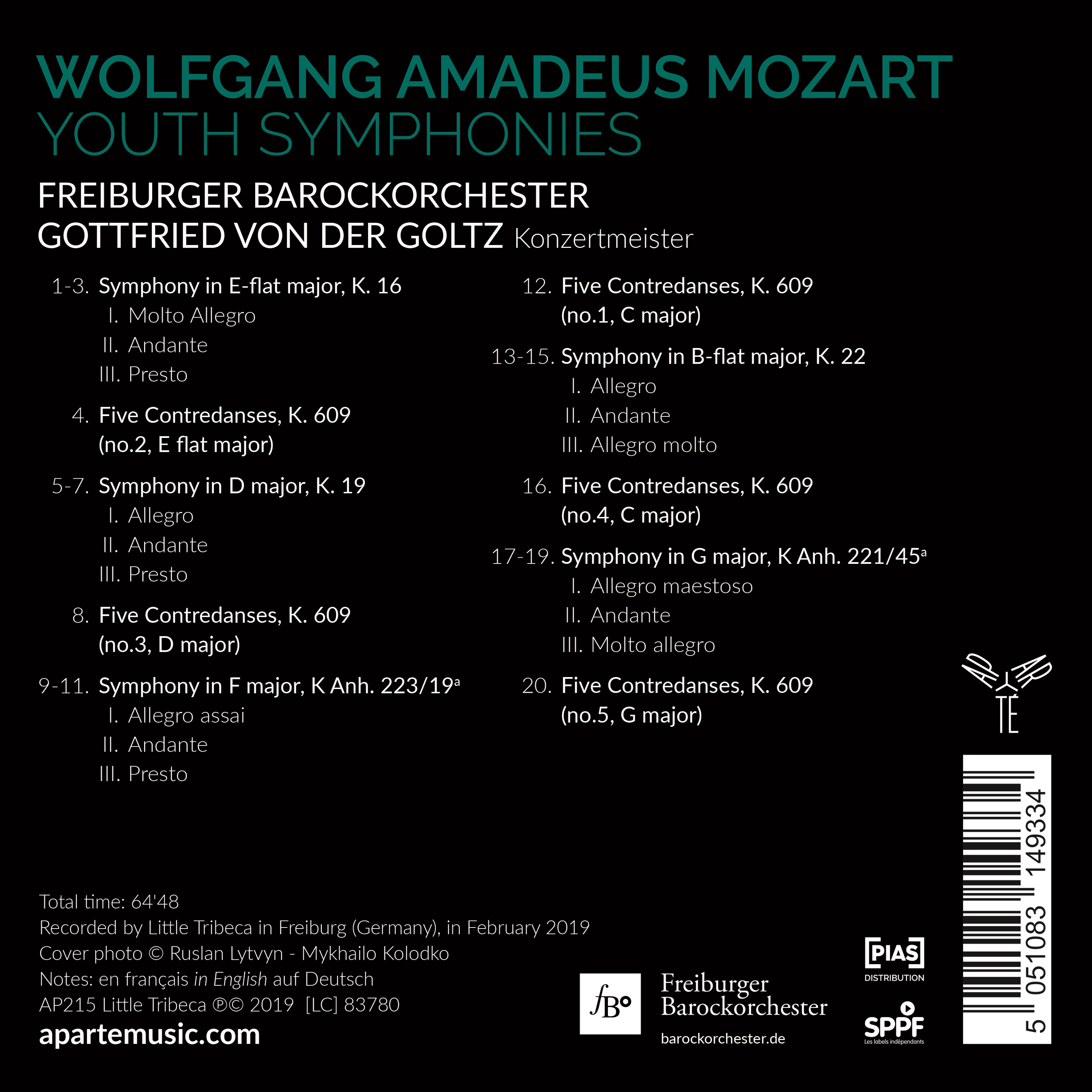Freiburger Barockorchester, Gottfried von der Goltz
AP215 - 1CD - 64' - Nov 29, 2019
The child Mozart's first symphonic attempts go beyond mere curiosity when you look at them closely, as the musicologist Henning Bey, author of the texts accompanying this new recording, points out. He shows how the young boy, without his bedridden father present, managed to put his very first symphony down on paper after a few attempts at keyboard and violin. The manuscript still bears the marks of the young composer's questions and the difficulties he encountered with ink and a badly sharpened pen. Thus we learn that "form develops from content" from this first orchestral attempt. It was through writing minuets that Mozart was introduced to composition by his father. And it was precisely through dance that he would complete his work, composing the Five Contredanses, K. 609 a few days before his death for the imperial balls at the Redoute. They are presented here, as if to complete the circle, between each of the five early symphonies that form the substance of this album. The excellence of Gottfried von der Goltz's interpretation, and that of the musicians of the Freiburger Barockorchester whom he leads with his violin, casts an adult eye on this music of childhood, before the traveller Mozart soaked up everything he saw and heard to develop his own singular language. What is most disturbing is the sure hand of a child of 8 or 9, who already seems to know perfectly well where he is going and who he will become.
© François Hudry
WOLFGANG AMADEUS MOZART
Symphony in E flat major K. 16
1. I. Molto allegro
2. II. Andante
3. III. Presto
4. Five Contredanses K. 609, no.2 in E flat major
Symphony in D major K. 19
5. I. Allegro
6. II. Andante
7. III. Presto
8. Five Contredanses K. 609, no.3 in D major
Symphony in F major K Anh. 223/19a
9. I. Allegro assai
10. II. Andante
11. III. Presto
12. Five Contredanses K. 609, no.1 in C major
Symphony in B flat major K. 22
13. I. Allegro
14. II. Andante
15. III. Allegro molto
16. Five Contredanses K. 609, no.4 in C major
Symphony in G major K Anh. 221/45a
17. I. Allegro maestoso
18. II. Andante
19. III. Molto allegro
20. Five Contredanses K. 609, no.5 in G major



